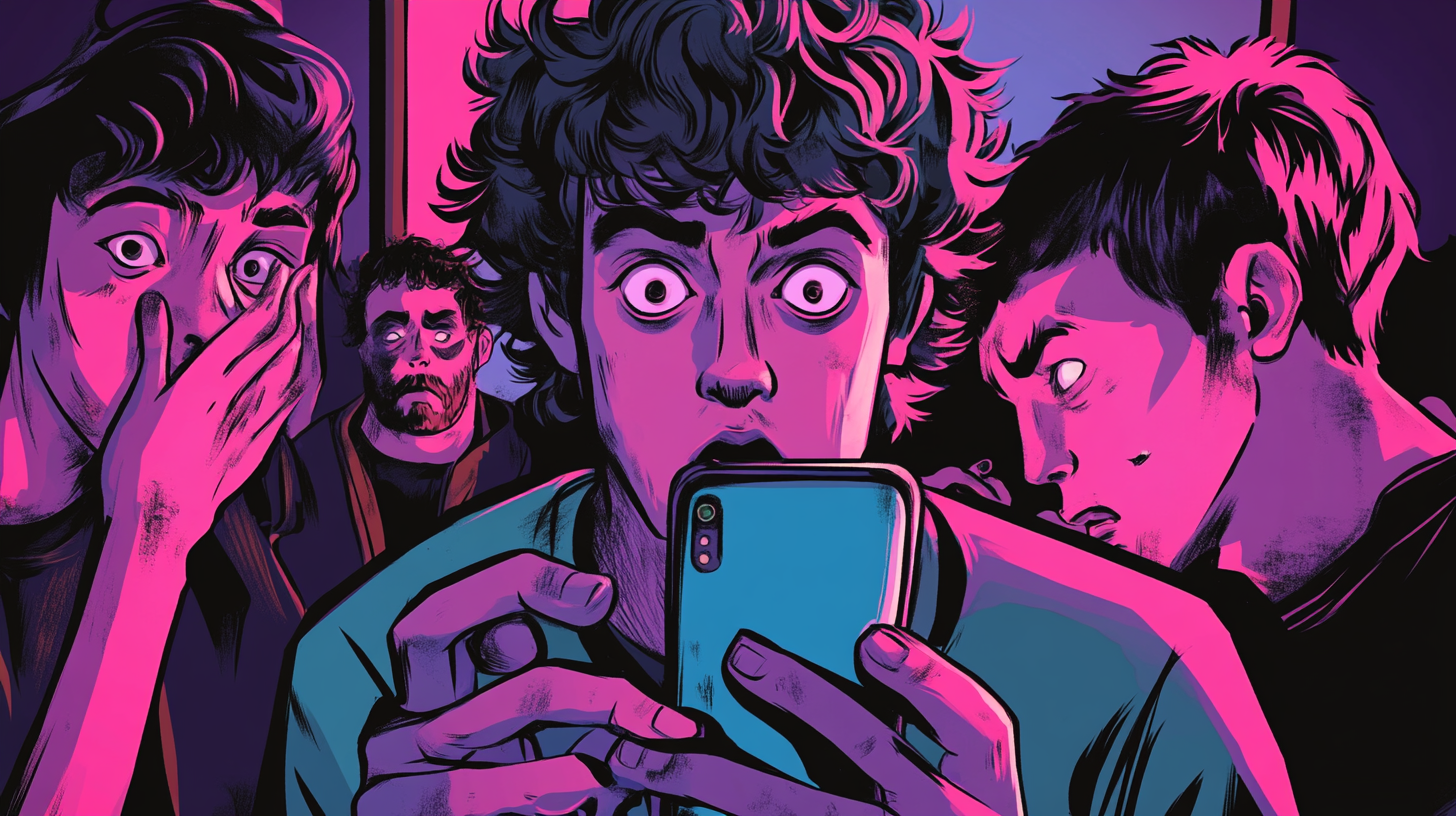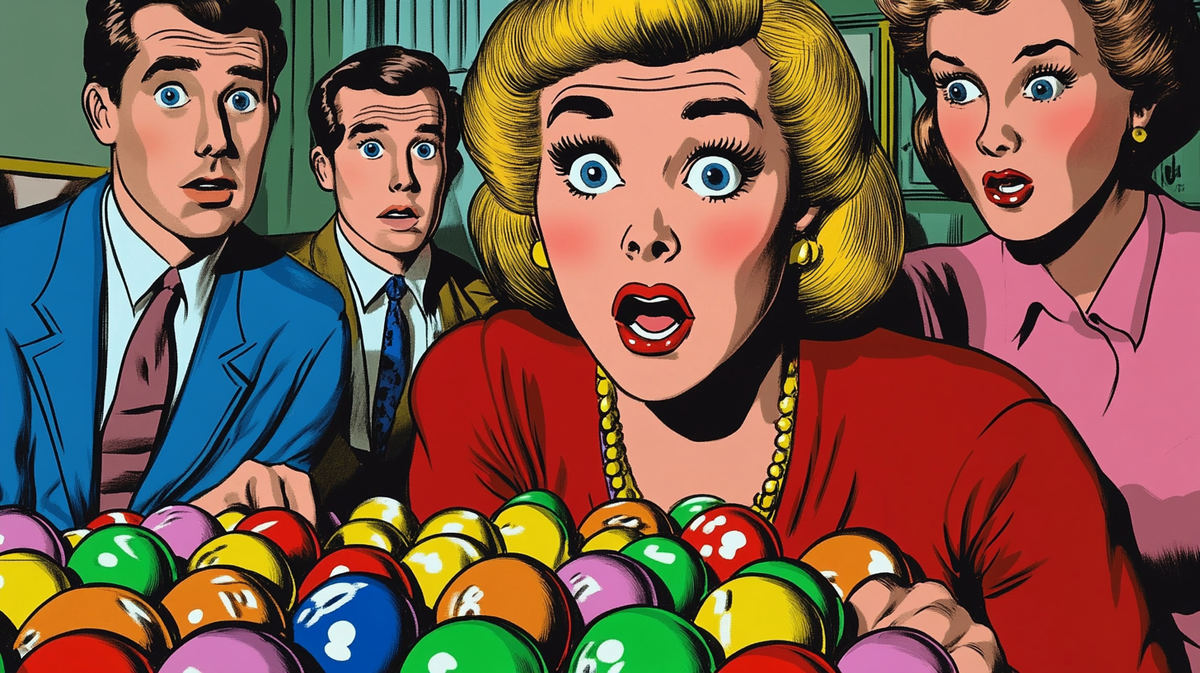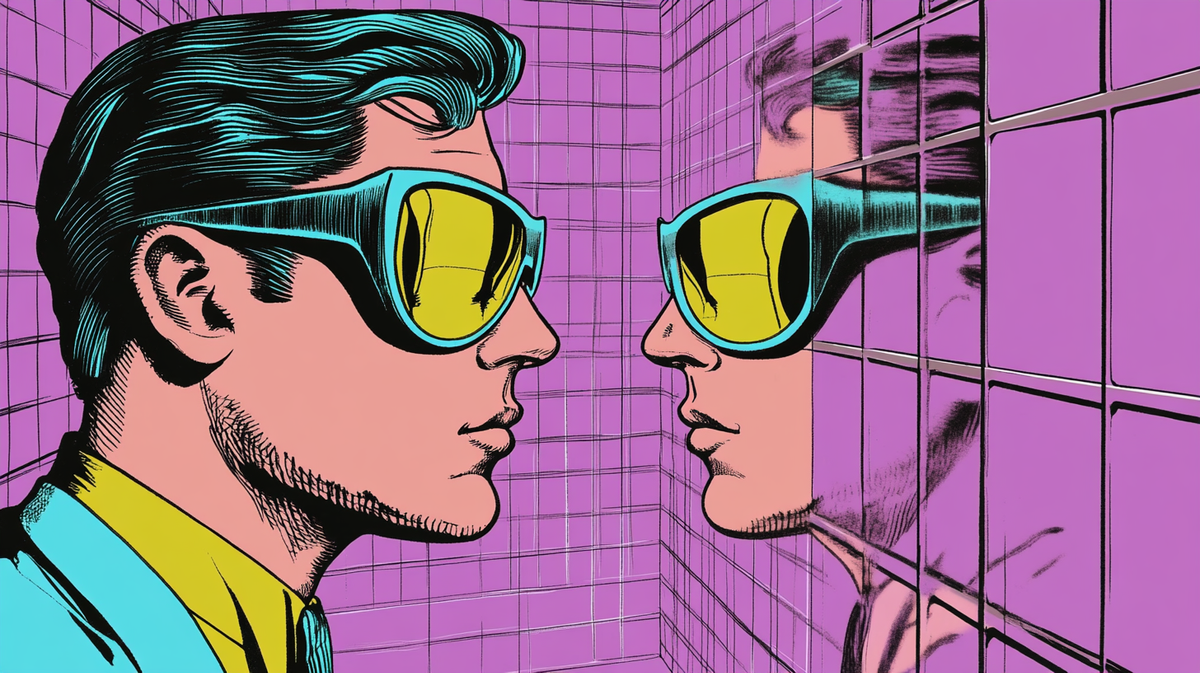The Psychopaths of TikTok 🤳

When you think of psychopaths, where does your mind take you? For me, I’m transported back to my late teens, and watching Patrick Bateman, the eponymous main character from American Psycho: a suave lunatic who can be an expert in the inner workings of Phil Collins, but also an expert in dragging people’s inner workings all over his immaculate apartment.
Psychopaths, if Hollywood is to be believed, are typically male, violent loners hell-bent on destroying everything around them. Head to TikTok however, and a growing number of young, female content creators with mental health diagnoses are identifying as psychopaths.
Is this the long, slow march to equality finally catching up with mental health? Or another example of what happens when labels run wild on the internet? That’s what I’m going to find out.
What’s in a name? 🤔

Head to TikTok, and you’ll find some 300,000 videos carrying labels associated with being a psychopath. While most seem to be light-hearted references to being a bit different from others, there are some who take the moniker more seriously.
Victhepath, a young American woman who self-identifies as a psychopath posts content on what it feels like to be a psychopath, and how to spot one. Then there’s Cherry, aka thatplasticbitch, who also uses the label to talk about her experience.
@victhepath Knowing somebody with these traits doesn’t necessarily mean they’re a psychopath, but if you know someone will ALL these traits👀 #psychopath #psychopathy #psychpathyspectrum #howtospotapsychopath #femalepsychopath #chroniclesofapsychopath #highfunctioningpsychopath #antisocialpersonalitydisorder #aspdawareness #psychopathdiary
♬ original sound - Vic Path
Both have significant followings, and both utilise the label psychopath to talk about mental health. Look further afield and there are others: The Nameless Narcissist, Kylee Rackam, Kanika Batra-Matheson. All of which tug on the label of psychopath and sociopath to explain what it’s like being them. And all have turned that label into a way of making a living. More on that later.
But for now, let’s go back to these psychopaths. The word psychopath doesn’t officially exist if you consult the likes of the Diagnostic and Statistical Manual of Mental Disorders, or DSM to its friends. What sits in its place is antisocial personality disorder (ASPD).
ASPD is characterised by a failure to conform to laws and social norms, repeated lying or conning of others, impulsivity, a lack of remorse, and basic disregard for or violation of others’ rights and safety. Sounds positively psychotic, right? That there are people wandering around on social media telling everyone they don’t have any regard for the thoughts and feelings of others. What else are they capable of?
The label ‘psychopath’ is an evocative one, with a long history. It’s precisely that history that makes the word useful to those who decide to own it. But first, let’s find out where it came from.
Psychos 🔪

History is littered with people fitting neatly inside the psychopath label, but it wasn’t until the late 1800s that we saw it turn up in medical textbooks - and become a term in its own right.
A paper written by an English psychiatrist in the Journal of Mental Science about a man he called W.B prompted frenzied examination of this new type of man. This man was, in the notes of the observing psychiatrist, educated, and enjoyed reading newspapers. He had also, since he was boy, enjoyed slicing up horses. Humans too.
Here’s an excerpt from the paper (note: it is quite graphic):
“He whipped a younger brother, almost killing him, and then “was apprehended for cutting the throat of a valuable horse belonging to a neighbour.” He confessed to this act and to maiming and killing other animals as well. Jailed for twelve months, he returned and tried to strangle a younger brother. An attempt to smother an infant sibling and several thefts led to a 7-year penitentiary sentence. “His next escapade was the result of an accident. B and his father were at a neighbour‟s one evening, and while paring apples, the old man accidentally cut his hand ... severely. B... became restless, nervous, pale,” and went to a nearby farmyard where “he cut the throat of a horse, killing it.” While hiding in the woods, he raped a little girl.”

W.B. had spent his life in and out of institutions, picking up labels as he went along. The doctor who wrote the above passage said he was “morally insane”, an idea that was popular among psychiatrists at the time. To be morally insane essentially meant people acted outside the bounds of what was considered decent, and felt little for the consequences of that. The moral lens by which people were viewed pushed us to ask, were they just mad, or just plain bad?
German psychiatrist J. L. A. Koch first used the term psychopath in the 1890s. But Koch’s original intention with introducing ‘psychopathic constitutional inferiority’ as it was then called was to try and destigmatise this mysterious ailment. But while Koch wanted to understand his patients, others wanted to demonise them.
Mad Lads 🤪

While discussions around who or what a psychopath was raged on for decades - seeming to create more confusion than clarity - we’d have to wait until 1941 until the term ‘psychopath’ emerged as something with a distinct definition. Hervey Cleckley’s landmark book The Mask of Sanity defined the psychopath for the first time as a distinct type of person.
The psychopath was charming yet insincere, intelligent yet remorseless. They lied shamelessly and acted impulsively. They were indifferent to the pain of others, and experienced little emotion. What’s important to note here is that Cleckley wrote this book while working as a psychiatrist at a Georgia state hospital.
He noticed that nearly 15% of patients didn’t fit any one diagnosis. They were also unlike other patients in that psychiatrists found they could talk and engage with psychopaths in a seemingly normal way. Some psychiatrists even liked these men - psychopaths were almost always men. But the records of these men told a story of violence and abuse towards others, but little thought to what it might mean.
It was Cleckley’s book that helped popularise the idea of people being devoid of morals - and that they tended to do terrible things. Hollywood ran with it: psychopaths became fodder for writers and directors looking to scare the sh*t out of their viewers - a good list of films can be found here.

Psychopaths quickly became criminals of the rarest order. Checklists were created to help find more psychopaths - you can take one of those yourself if you’re interested. People wanted to know, how many psychopaths were there? Criminal psychologist Robert Hare suggested that as many as 20% of the American prison population were psychopaths, sometimes more.
“Psychopaths are social predators who charm, manipulate, and ruthlessly plow their way through life, leaving a broad trail of broken hearts, shattered expectations, and empty wallets,” Hare wrote in his 1993 book, Without Conscience.
According to Martha Stout’s bestselling 2005 book, The Sociopath Next Door, one in 25 Americans is a sociopath, she claims, and that statistic is still cited today. Side note: in the 90s, psychopath had been replaced by sociopath as an alternative, but it didn’t have quite the same ring to it as ‘psychopath’.
In little over a century, the word had metamorphosised. What began as a term to help understand people, became a word that helped us other people we thought were ‘bad’, which brings us neatly back to the new breed of psychopaths on TikTok.
That’s my name 📛

The history of the word psychopath is really a history of who gets to label whom. In this case, people in white coats and degrees told people without such things they were bad and wrong. And they might be. But on TikTok what we’re seeing is the reverse.
People are reclaiming the label and using it to their own advantage. Vic the Path, the psychopath we met earlier was interviewed recently about why she used the word to describe how she felt. “My sole motivator is money,” she said, admitting that she struggled to find work after graduating college, but found using the label ‘psychopath’ allowed her to build a following, and ultimately, make a living.
Other influencers have said the same. Cherry, or @thatplasticbitch, earns approximately $2,000 a month on TikTok, where she talks about what it’s like to be a “sociopath.” They reclaimed the labels and used them to their advantage. I’ve written about this idea before: the ownership and application of labels have become both fluid and fixed at the same time.
The term psychopath has long been seen as a label nobody wanted. Until someone realised that because it was so undesirable it could be used to capture people’s attention.

Like so many of the ideas I’ve explored in these newsletters, being a psychopath is a fluid idea that changes depending on who is using it. For its detractors, it’s a broad brush to tarnish people who are sick, and devoid of the morals we feel we have. For its proponents, it’s something that can be picked up and put down to further one’s cause. For the psychopaths I’ve talked about here, all say they are attempting to raise awareness of what it feels like to be them.
Neither can ever truly own the idea. Instead, it creates a battleground to be fought over. And maybe that’s where we end up with mental health labels: it’s something we fight to own. They start out as ways to categorise the human condition but quickly become contested terms to be fought over.
I’ll leave you with this: Labelling people is very different from labelling animals, or buildings or diseases. Diseases don’t care what you call them. The opposite is true of people. When we label people it changes how we experience ourselves.

Take multiple personality disorder, or MPD. Between 1972 and 1986, the number of cases of patients with multiple personalities exploded from a few dozen to an estimated six thousand. Whatever one’s thoughts about the reality of these diagnoses, reckons philosopher Ian Hacking, everyone could agree that, in 1955, no such diagnosis existed.
By 1986, though, multiple personality disorder was not only a recognized psychiatric label; it was also sanctioned by academics, popular books, talk shows, and, most important, the experiences of people with multiple personalities.
Hacking refers to this process, in which naming creates the thing named—and in which the meaning of names can be affected, in turn, by the name bearers—as “dynamic nominalism.” That is when we give someone a label, it changes them, how they behave, and how people seem them. For better and for worse.
Psychopaths have had to endure how society thinks about them for a century. Now they’re taking it back.
Things we learned this week 🤓
- 👫 Men, want to age more gracefully? Get married. Women? It’s a bit more complicated.
- ❤️🩹 Ghosting friends and family has a bigger impact than first thought.
- 🐶 Man’s best friend? Dogs will try and save their owners says study.
- 💪 When we work out our muscles, turns out we’re working out our brains, too.
Just a list of proper mental health services I always recommend 💡
Here is a list of excellent mental health services that are vetted and regulated that I share with the therapists I teach:
- 👨👨👦👦 Peer Support Groups - good relationships are one of the quickest ways to improve wellbeing. Rethink Mental Illness has a database of peer support groups across the UK.
- 📝 Samaritans Directory - the Samaritans, so often overlooked for the work they do, has a directory of organisations that specialise in different forms of distress. From abuse to sexual identity, this is a great place to start if you’re looking for specific forms of help.
- 💓 Hubofhope - A brilliant resource. Simply put in your postcode and it lists all the mental health services in your local area.
I love you all. 💋









